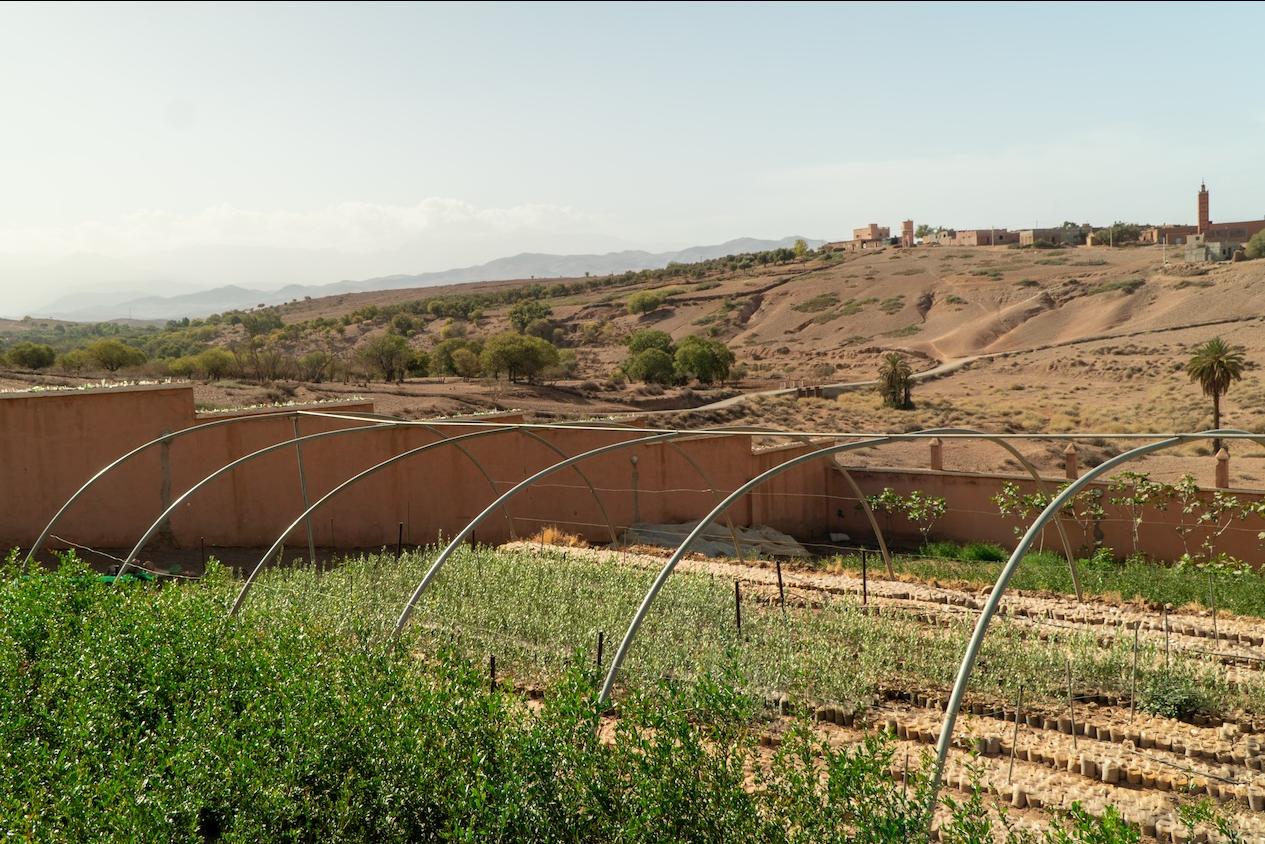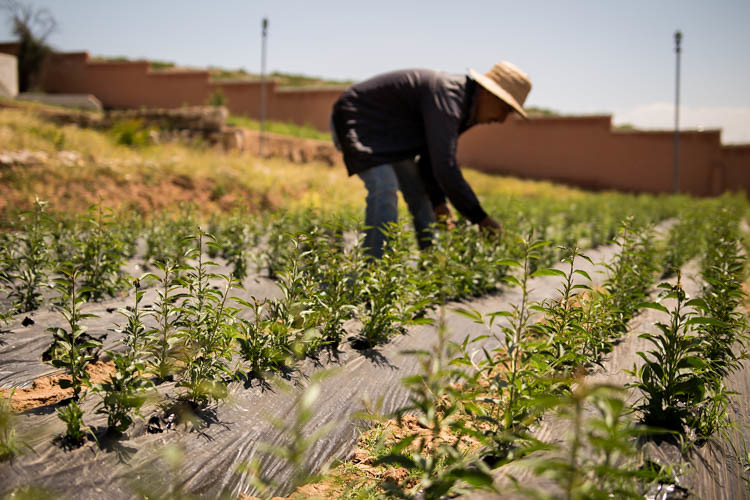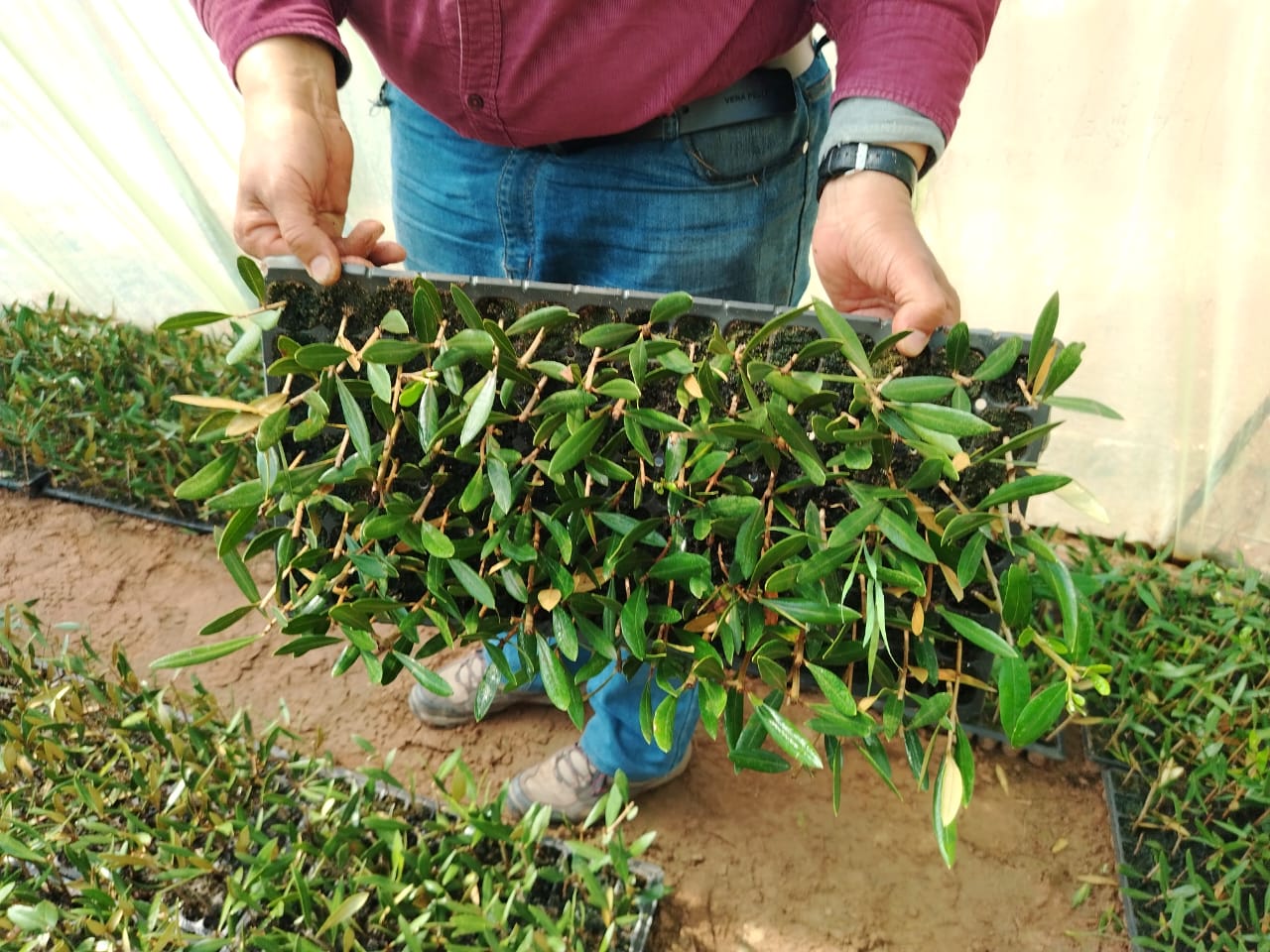
Saplings grow at one of the community-led tree planting projects Trees for Days partners with in Morocco. (Image courtesy of Planeterra.)
Tourism and eco-guilt don’t have to be travel partners. Rather, as small group travel operator G Adventures and community tourism nonprofit Planeterra say, tourism can be a “force for good." Together, they’re collaborating with communities worldwide to plant a tree for every day a traveler spends on a G Adventures trip through the aptly named Trees for Days initiative.
G Adventures and Planeterra were built on the idea of using tourism to benefit local communities, Jamie Sweeting, president of Planeterra, told TriplePundit. But the racial and social justice movements of 2020 and 2021 galvanized G Adventures’ search for equity-based solutions to address the climate and biodiversity crises affecting the communities its travelers visit. Many travel destinations are popular for their unique environments or climates, but their locations often also leave them vulnerable to climate impacts alongside the environmental and social strains that can accompany tourism itself.
“It's the people in the places and villages that we take our travelers to that are really on the precipice of having to deal with the effects of climate change today,” he said. “It's not a future consideration. Whether it's a drought or famine or severe weather events or soil erosion or desertification or whatever the issue is, our communities are dealing with this and have been dealing with this, in some cases, for quite some time.”
Instead of following the mainstream path by purchasing carbon offsets — which Sweeting said G Adventures Founder Bruce Poon Tip equated to “buying your way out of the problem” — or obtaining a certification for tracking environmental and social footprints, G Adventures looked to trees. Unlike some tree planting programs that race to sink as many saplings into the soil in the least amount of time possible and fail to build a lasting impact, Trees for Days focuses on finding the right people to plant the right trees in the right places.

“How do you work with communities to grow trees that, yes, they're sequestering carbon, but they're also addressing the very direct impacts they're already facing with relation to climate change and biodiversity loss?” Sweeting said. “It's a lot to do with regeneration, renewal, reforestation, these sorts of things. But first and foremost, it has to uplift the communities.”
This can mean planting trees that protect from soil erosion, absorb less water during droughts, or provide tree cover from extreme heat. They can be fruit trees or agroforestry trees, with an emphasis on native species. Even with that seemingly time-consuming attention to detail, the initiative has planted nearly 4 million trees on behalf of G Adventurers since it began in 2023, Sweeting said.
Trees for Days originally looked into third-party carbon offset criteria to choose its community projects, but the process is complicated and ultimately put most of the communities it wanted to work with on the chopping block. So instead, the initiative relies on taking deliberate action.
“So much of this stuff around carbon offsets is about math,” Sweeting said. “This isn't about math. This is about people's lives and the impacts of climate change and biodiversity loss on their lives.”
While in-depth statistics on the initiative’s outcomes won’t be available for a few months, Sweeting shared a story from a partner in Madagascar as an example of its impact. “A gentleman had been living with his family under a tarpaulin for the last three years,” he said. “They were unhoused, with young kids on the poverty line, barely able to make things work. And as a result of this program … he has full employment, housing, these kids are fully clothed, full nutrition, they're going to school. And that's the power of tourism — when people just connect the dots and do it better.”
Trees for Days partners with 20 community projects worldwide in countries like Peru, Thailand and Madagascar. The projects span 116 different communities, benefiting about 115,000 people, Sweeting said. In addition to tailoring tree-plating projects to the communities’ environmental needs, the projects create jobs and even help bring people together.
The Akrich Nursery in Morocco is one example. Located in a 700-year-old Jewish cemetery, the nursery supports the local ecosystem and strengthens interfaith solidarity between the Muslim and Jewish communities living nearby. They grow a variety of fruit trees — including lemon, pomegranate and fig — which are distributed to farmers in the High Atlas Mountains.

“The High Atlas area is dealing with massive challenges from climate change and biodiversity loss,” Sweeting said. On top of that, residents and farmers are still trying to rebuild from a major earthquake that hit in 2023. “We're trying to work out how you can use trees as a vehicle to make them more resilient to the kinds of physical shocks you might get from a natural disaster, like an earthquake, but also these ongoing shocks that you're getting from climate change and desertification.”
Not all of the Trees for Days projects coincide with a G Adventures trip in the same area, but one of the projects in the High Atlas Mountains of Morocco does. Near the Akrich Nursery, artisans of the Achbarou Women’s Co-operative welcome visitors for a traditional carpet weaving demonstration and lunch. While there, travelers learn more about how their trip supports the local community and helps preserve cultural heritage.
The trips that allow travelers to visit the tree growing projects are the initiative’s Holy Grail, Sweeting said. But even where they can’t see the fruit of their travels in action, travelers can still feel good knowing that the trees planted will more than make up for their trip’s carbon footprint.
While many may want to do the planting themselves, Sweeting emphasized, “It's not about the traveler feeling like a hero. It's about the local communities helping themselves and tackling their own problems their own way.”

Riya Anne Polcastro is an author, photographer and adventurer based out of Baja California Sur, México. She enjoys writing just about anything, from gritty fiction to business and environmental issues. She is especially interested in how sustainability can be harnessed to encourage economic and environmental equity between the Global South and North. One day she hopes to travel the world with nothing but a backpack and her trusty laptop.














